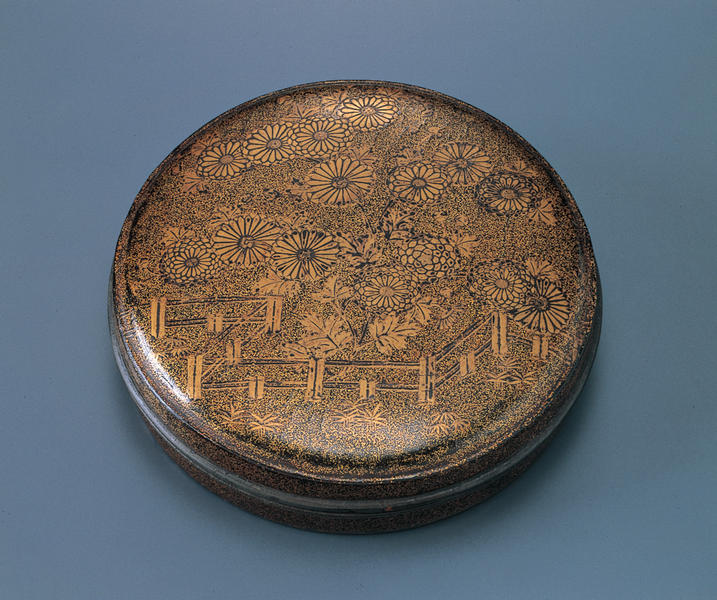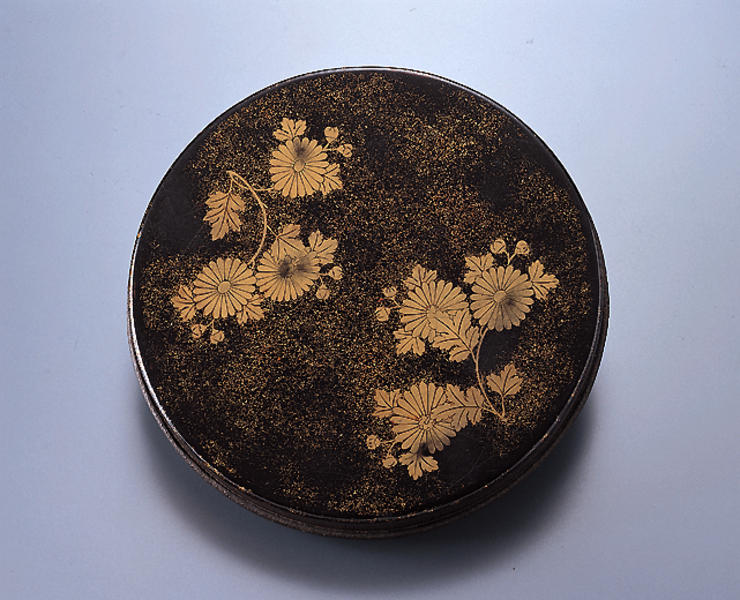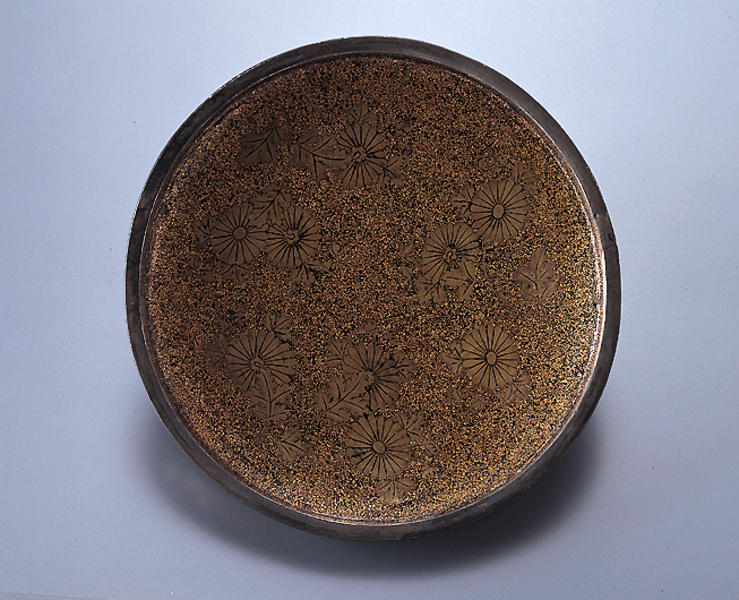Incense Container with Fence and Chrysanthemum Design
- Nanbokucho to Muromachi period, 14th–15th century
- Black lacquer, nashiji, takamakie, togidashimak-ie
- H-3.7 D-13
- Miho Museum
Catalogue Entry
Muromachi period, 15th century
Height, 3.7cm; diameter, 12.8cm
Circular, with a rounded lid and copper edge. Coated overall with black lacquer. Thick nashiji ground. The exterior of the lid has a pattern of chrysanthemum bushes placed behind a low fence. The chrysanthemum blossoms have either a single or multiple rows of petals, and both the blossoms and leaves are depicted from above and from below. Gold takamakie technique. The interior of the lid has three branches of chrysanthemums created in togidashi makie, and the interior of the body of the box is lined with a karaori "Chinese-weave" fabric (Edo period) decorated with a pattern of jewels, keys, jewel pouches, clove, and small wands. The bottom of the body is also decorated with a togidashi makie pattern of chrysanthemum branches.
This fenced chrysanthemum makie pattern is reminiscent of the Kamakura period National Treasure Inkstone Box with Fenced Chrysanthemum Makie Decoration (Tsurugaoka Hachiman Shrine, Kamakura). There was also a tebako toiletries box that formed a set with the Tsurugaoka Inkstone Box, but it was lost at sea when the ship carrying the box back from its display at the 1873 Vienna World Exposition sank off the coast of the Izu Peninsula in 1874. The present mirror case can clearly be suggested as an interior fitting for a toiletry box with such a fenced chrysanthemum makie pattern.
The box inscription for this mirror case is inscribed on the exterior of the box lid in black ink. It reads "Antique Mirror Box Incense Container," indicating that this mirror case was used by later generations of tea masters as an incense container for the tea ceremony. The interior of the box lid states, in a different hand from the inscription on the exterior, "Kamakura period, mirror case with fenced chrysanthemum makie, measurements: diameter 13.7 centimeters, Matsuda Gonroku's opinion on this object." Matsuda Gonroku (1896-1986) was a lacquer artist designated a "Living National Treasure" and was a recipient of the Order of Cultural Merit. AH


